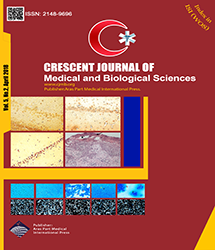
| Original Article | |
| Comparison of Mechanical and Physical Properties of White and Gray Mineral Trioxide Aggregate Useable in Dentistry | |
| Mahdis Nesabi1, Behzad Yasrebi1 | |
| 1Department of Biomedical engineering, Tabriz Branch, Islamic Azad University, Tabriz, Iran | |
|
CJMB 2018; 5: 155–159 Viewed : 5223 times Downloaded : 4442 times. Keywords : MTA, Microhardness, Solubility, Ringer |
|
| Full Text(PDF) | Related Articles | |
| Abstract | |
Objectives: Currently, different materials are used to obdurate tooth root canals. An ideal root canal flling material should have some specifc properties, including biocompatibility, dimensional stability and insolubility. Materials and Methods: One of the methods to evaluate these materials is to carry out solubility and microhardness tests. To this end, 20 mineral trioxide aggregate (MTA) samples were prepared for solubility test and 60 samples for microhardness test. MTA (Angelus, Brazil) was prepared based on manufacturer’s instructions by mixing the powder and catalyst at a Results: The results showed that solubility of white MTA after 1 day was similar to that of gray MTA; however, after 7 days, its solubility increased. There were no signifcant differences in microhardness on day 1 and on the subsequent days between white and gray MTA samples (P<0.05). Conclusions: There was no signifcant difference in the solubility of white and gray MTA samples at 24-hour interval; however, at 7-day interval, the solubility of white MTA (WMTA) was signifcantly higher than that of grey MTA (GMTA) (with the solubility of both materials being <3%) In addition, there was no signifcant difference in microhardness of white and gray MTA between the frst day and other intervals (P<0.05). |
Cite By, Google Scholar
Online Submission System
 CJMB ENDNOTE ® Style
CJMB ENDNOTE ® Style
 Tutorials
Tutorials
 Publication Charge
Medical and Biological Research Center
About Journal
Publication Charge
Medical and Biological Research Center
About Journal
Aras Part Medical International Press Editor-in-Chief
Arash Khaki
Deputy Editor
Zafer Akan


















